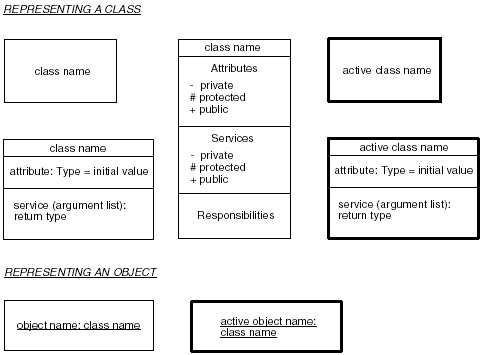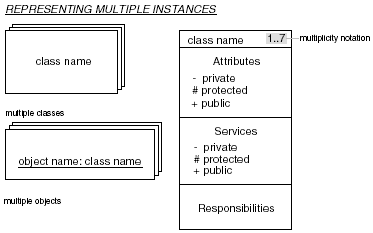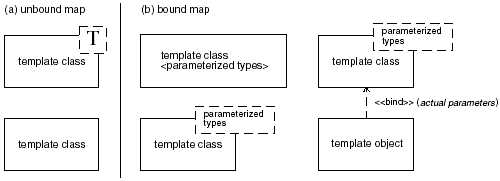A.1 Class and Object Diagrams
| Class and object diagrams are the most common diagrams used in modeling an object-oriented system. Class diagrams can be use to represent each type of class in your system, including template classes and interface classes. Class diagrams can include the details of the class (e.g., attributes, services). Class and object diagrams can show the datatype, value of variables , and return types of functions. Object diagrams can show the object name . Both types of diagrams can depict the number of classes or objects used in the system along with their relationships between classes and objects. Figure A-1. The multiple ways a class or object can be represented. Classes can show services, attributes, and visibility. Active classes or objects use a heavier line. Figure A-2. Multiple instances of classes and objects. Multiple instances can be shown graphically or by using multiplicity notation. Figure A-3. The ways to represent bound or unbound template or parameterized classes. |
Parallel and Distributed Programming Using C++
ISBN: 0131013769
EAN: 2147483647
EAN: 2147483647
Year: 2002
Pages: 133
Pages: 133
Authors: Cameron Hughes, Tracey Hughes


